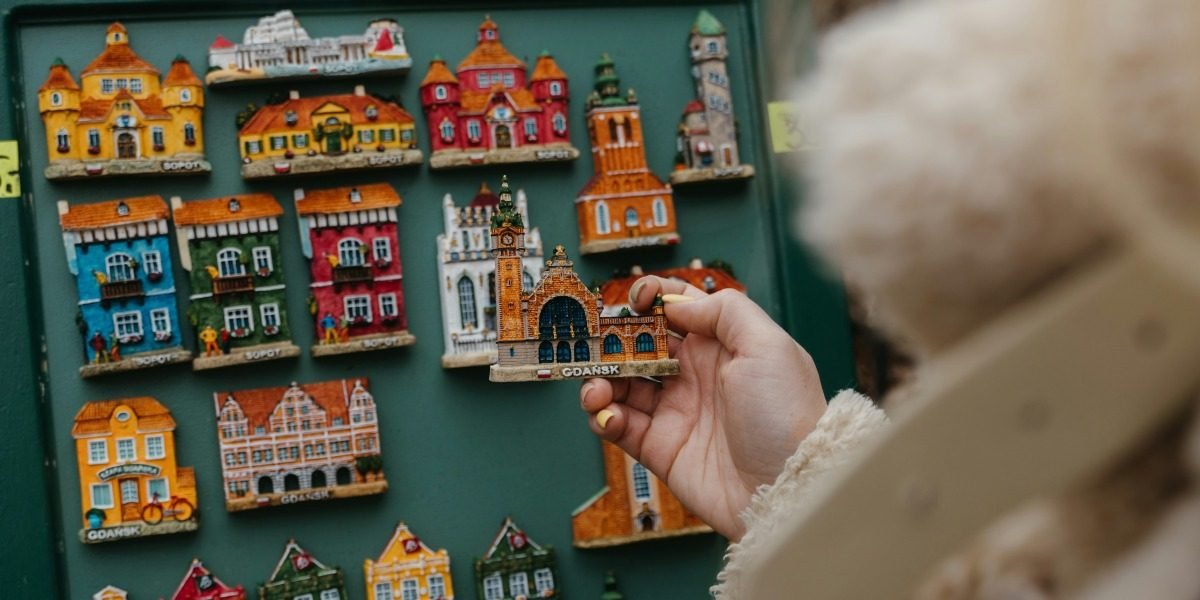Choosing the right location is one of the most important decisions for a souvenir store. Tourist-heavy areas may seem like the obvious choice, but high visibility doesn’t always guarantee profitability. Rent in prime districts can be steep, and competition may be intense. A store near a landmark, museum, or transport hub might attract steady visitors without the overhead of a prime retail strip. A shop near a quiet historical site may draw fewer customers but those who visit are often more engaged. A beachfront kiosk might see seasonal surges, while a store in a year-round destination could benefit from steady flows.
Tourism patterns also shape expectations. Some areas thrive during festivals or holidays, while others rely on consistent international arrivals. Understanding these rhythms helps owners avoid overstocking during slow months or underestimating demand during peak periods. Online presence also plays a role. Many tourists search for local gifts before traveling, so a simple website or social media page showing product highlights and store hours can help guide foot traffic.
Product Selection and Local Identity
Souvenir stores often balance between familiar items and local character. Keychains, magnets, and mugs are common, but they don’t always stand out. Offering products that reflect the region’s culture, humor, or history can make a store feel more authentic. Partnering with local artisans adds depth. Handmade crafts, regional snacks, or artwork inspired by local landmarks can appeal to visitors looking for meaningful keepsakes. As RichestPH noted in its overview of souvenir opportunities, tourists often seek items that carry a sense of place.
Product variety also matters. Some travelers shop for small tokens, while others seek gifts for family or friends. A mix of price points and styles helps reach different buyers. Seasonal items, like holiday-themed souvenirs or festival merchandise, can support short-term spikes in interest. Inventory should reflect the store’s identity. A shop near a mountain trail might offer hiking-themed gifts, while one near a historical site might stock replicas or educational materials. Matching products to location helps reinforce the store’s purpose and appeal.
Understanding Customer Behavior
Tourists often make purchases based on impulse, but their decisions are shaped by context. A traveler who has just completed a guided tour may be more inclined to buy a book or replica related to what they learned. Families with children may gravitate toward toys or colorful items that capture attention quickly. Couples may prefer keepsakes that feel personal, such as handmade jewelry or framed artwork.
Cultural differences also influence buying habits. Visitors from some regions may prefer practical items they can use at home, while others may prioritize decorative souvenirs. Understanding these patterns helps store owners stock products that appeal to a wide range of customers. Offering multilingual signage or packaging can also make international visitors feel more comfortable.
Financial Planning and Long-Term Viability
Profitability depends on more than sales volume. Rent, staffing, and inventory costs can quickly erode margins if not managed carefully. A thorough market analysis helps identify potential opportunities and challenges. As Newfoundr’s step-by-step guide to starting a souvenir shop explains, understanding customer demand, competitor pricing, and supplier options is essential before committing capital.
Tourism can be unpredictable, influenced by global events, exchange rates, or weather. Building flexibility into the business model helps reduce risk. Some stores supplement foot traffic with online sales, offering delivery or pick-up options. Others diversify by stocking practical items like sunscreen or bottled water alongside souvenirs, capturing impulse purchases. Insurance, permits, and compliance with local regulations also add to the planning process.
Case Study: Coastal Town vs. City Center
Consider two different souvenir stores. A coastal town shop near a popular beach may thrive during summer months, selling seashell crafts, beachwear, and cold drinks. However, it may struggle in the off-season when tourist numbers drop. To stay viable, the owner might expand into online sales or partner with local hotels to sell products year-round.
By contrast, a city-center store near a major museum may benefit from steady traffic throughout the year. Its products might include educational books, replicas of historical artifacts, and locally made crafts. While rent may be higher, the consistent flow of visitors provides stability. Each model has strengths and weaknesses, but both highlight the importance of aligning product selection and financial planning with location.
Balancing Authenticity and Commercial Appeal
One of the challenges for souvenir stores is avoiding the perception of being a “tourist trap.” Shoppers often want items that feel authentic rather than mass-produced. Stocking locally sourced goods, highlighting artisan partnerships, and offering products with cultural or historical significance can help build credibility. At the same time, familiar low-cost items like magnets and postcards remain popular because they are easy to carry and affordable.
The balance lies in offering both. A store that combines practical, low-cost souvenirs with unique, locally inspired items can appeal to a broad audience. This approach reassures customers that they are getting value while also supporting local culture.
Global tourism is subject to shifts that are outside any single business owner’s control. Economic downturns, travel restrictions, or natural events can reduce visitor numbers. Stores that rely solely on walk-in traffic may find themselves vulnerable. Expanding into e-commerce, partnering with local attractions, or offering customizable products can help build resilience.
For example, some stores allow customers to personalize items with names or dates, creating a stronger emotional connection. Others collaborate with local tour operators to include souvenirs as part of package deals. These strategies help stabilize revenue even when tourist flows fluctuate.
Opening a souvenir store can be rewarding, but it requires careful planning. Location, product selection, customer behavior, and financial management all play critical roles. By balancing authenticity with commercial appeal and preparing for seasonal or global shifts, a store can move beyond the stereotype of a tourist trap and become a sustainable business that serves both visitors and the local community.







